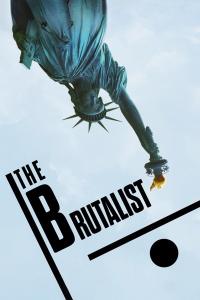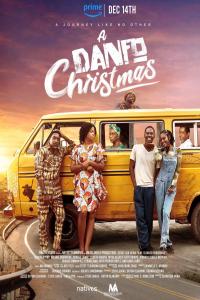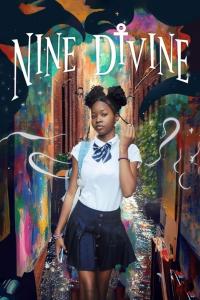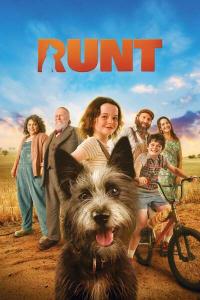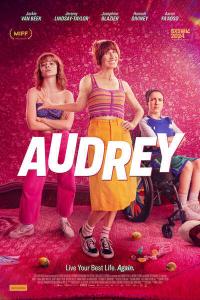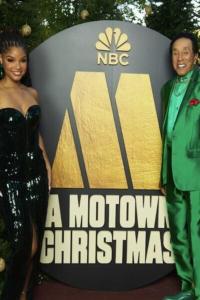Torrent details for "Sonic Youth (Studio Albums 1982 - 2009) [FLAC] [DarkAngie]" Log in to bookmark
Controls:
Language:
 English
EnglishTotal Size:
6.78 GB
Info Hash:
312b7b3bb2ef93a43c8a5eb0ed76b922593da783
Added By:
Added:
30-03-2022 22:09
Views:
824
Health:

Seeds:
6
Leechers:
1
Completed:
313
Biography:
As they redefined what noise meant within rock & roll -- and what success meant for a band with experimental roots -- Sonic Youth became one of the most influential, and popular, acts to emerge from the American underground. Their inventive use of alternate tunings, dissonance, and feedback, which they combined with the intensity of hardcore punk and the performance art aesthetic of New York's avant-garde, created a new sonic landscape with an impact that lasted for decades. While 1983's Confusion Is Sex reflected the height of no wave's harsh yet hypnotic influence on their music, Sonic Youth soon added more structure and melody without sacrificing any of their edge. Their trio of independent late-'80s records -- 1986's EVOL, 1987's Sister, and 1988's Daydream Nation -- became touchstones for a generation of indie rockers, thanks to their volatile mix of experiments and accessibility. The band's growing popularity led them to sign to a major label, and with 1990's Goo and 1992's Dirty, Sonic Youth courted mainstream success (most of their albums from the '90s onward charted within the Top 100 of the Billboard 200) while maintaining their reputation as innovators and tastemakers. Later in the '90s, creative restlessness led them to make more challenging major-label albums like 1995's Washing Machine and to release overtly experimental works on their own SYR imprint. In the decade that followed, Sonic Youth continued to balance the different sides of their music in ways that felt true to their legacy; from 2002's introspective Murray St. to 2009's hard-hitting swan song The Eternal, they remained a band who always forged their own path. Sonic Youth's future acclaim was unthinkable when guitarists/vocalists Thurston Moore and Lee Ranaldo and bassist/vocalist Kim Gordon formed Sonic Youth in 1981. Moore grew up in Bethel, Connecticut; Ranaldo was from Long Island; and Gordon was an art student and musician from California. All three arrived in Manhattan during the height of the New York-based post-punk no wave movement. After Moore's band the Coachmen broke up, he began playing with CKM and met Gordon, who was also a member of the group. The pair became romantic and creative partners, and settled on the name Sonic Youth for their project in mid-1981. That June, the pair helped stage the Noise Festival, in which the band made their live debut. When Moore saw Ranaldo performing with avant-garde composer Glenn Branca's electric guitar ensemble, he invited the guitarist to join Sonic Youth. At the time, the group also featured keyboardist Anne DeMarinis and drummer Richard Edson. DeMarinis departed shortly afterward, and the quartet soon became the first band on Branca's Neutral Records label. That December, Sonic Youth recorded their self-titled debut EP at a studio in Radio City Music Hall. Appearing in March 1982, Sonic Youth featured a more straightforward post-punk sound than the music they would make in the near future. When Edson left Sonic Youth to pursue an acting career, he was replaced by Bob Bert. However, creative differences between Bert and the rest of the band while on tour with Swans led to his dismissal. It was Jim Sclavunos who played most of the drums on Sonic Youth's debut album, Confusion Is Sex, which arrived in February 1983 and introduced the abrasive, no wave-inspired approach that defined most of the group's early work. A few months later Sclavunos quit, and Bert rejoined Sonic Youth in time to record the Kill Yr Idols EP, which the German label Zensor released that October. Early in 1984, Moore attempted to land the band a contract with the British indie label Doublevision, but the label rejected the demos. Paul Smith, one of the owners of Doublevision, formed Blast First Records in order to release the band's music. Thanks to a deal with U.K. indie label Rough Trade, Sonic Youth had their first label with strong distribution. During these negotiations, the cassette-only live album Sonic Death: Sonic Youth Live appeared on Moore's label Ecstatic Peace. That year, Gordon and Moore also married. To make their second album, Sonic Youth worked with Martin Bisi, and expanded on improvised pieces they played in between songs while in concert. Drawing on the shadowy side of Americana and reflecting the state of the nation in the mid-'80s, Bad Moon Rising appeared in March 1985 via Blast First in the U.K. and Homestead Records in the U.S., earning strong reviews from the underground music press thanks to its combination of dissonant, feedback-drenched experiments within relatively straightforward pop song structures. Following the release of the Death Valley '69 EP, Bert was replaced by former Crucifucks member Steve Shelley, who became the group's permanent drummer. Bad Moon Rising's acclaim attracted significant attention, including offers from major labels. Instead, Sonic Youth decided to sign with SST, home of Hüsker Dü and Black Flag, in early 1986. The band reunited with Bisi to make that May's EVOL, a more melodic set of songs that explored themes of celebrity and also featured collaborations with Lydia Lunch and Mike Watt. The album made Sonic Youth a fixture on college radio, and their status grew significantly with their next album. Largely written while on tour in support of EVOL and recorded with Walter Sear at his studio Sear Sound, Sister was released in March 1987 and continued the group's refinement of their music. The album, which incorporated acoustic guitar and drew inspiration from the life and writing of sci-fi author Philip K. Dick, was heavily praised by mainstream publications like Rolling Stone. That November, the band issued Master=Dik, an EP that included samples of Prince's "Kiss" as well as a cover of the Ramones' "Beat on the Brat" featuring Dinosaur Jr.'s J. Mascis. Sonic Youth's true breakthrough came in 1988 with the double album Daydream Nation. Instead of editing down their song ideas, the group expanded them into free-flowing suites that better reflected their live performances. Sonic Youth recorded the album at New York's Greene Street Studio with engineer Nick Sansano, whose work with hip-hop artists including Public Enemy impressed the band. Released on Enigma Records, it was a tour de force that was hailed as a masterpiece when it arrived in October 1988, and generated a college radio hit in "Teenage Riot." Sonic Youth followed it with January 1989's The Whitey Album, a tongue-in-cheek tribute to Madonna and other parts of mainstream pop culture from their side project Ciccone Youth. Despite Daydream Nation's wide acclaim, Enigma's distribution and financial woes meant the album wasn't always available in stores. These factors contributed heavily to the band's decision to move to the major label DGC in late 1989. Signing a contract that gave them complete creative control, as well as letting them function as talent seekers for the label, Sonic Youth established a precedent for alternative bands moving to majors during the '90s while preserving their artistic credibility. To make their major-label debut, the group recorded demos with Mascis and Gumball's Don Fleming, then worked with Sansano at Sorcerer Sound and Greene Street studios on lengthy, often experimental sessions. To complete the album, Sonic Youth recruited jazz musician-turned-producer Ron Saint Germain, who helped shape the sessions' numerous overdubs into a finished product with a focused sound that didn't abandon the group's noisy aesthetic. The results were June 1990's Goo, which was a college radio hit and reached 96 on the Billboard 200 Albums chart. The band explored their relationship to pop culture further on songs such as the Chuck D collaboration "Kool Thing," which hit number seven on the Billboard Modern Rock Tracks chart. After Goo's release, Neil Young invited Sonic Youth to open for him on his arena tour for Ragged Glory, a move that represented their first major incursion into the mainstream and also helped make Young a cult figure within the alternative circles during the '90s. For their second major-label album, Dirty, Sonic Youth nodded to Seattle grunge rockers such as Mudhoney and Nirvana, both of whom Sonic Youth had supported for several years (they released a split single with Mudhoney and brought Nirvana to DGC Records). The band worked with Nevermind mixer Andy Wallace and producer Butch Vig, who helped them focus their songs into a more accessible sound. Released in July 1992, Dirty reached number 83 on the Billboard 200 Albums chart, spawned the modern rock hits "100%," "Youth Against Fascism," and "Sugar Kane," and eventually went gold. In the wake of this success, Sonic Youth were hailed as alternative rock godfathers. The band reunited with Vig for their next album, recording at Sear Sound, where they made Sister. Despite its more overtly experimental and introspective approach to songwriting and recording, 1994's Experimental Jet Set, Trash and No Star nevertheless became one of the group's highest-charting albums when it debuted at number 34 on the Billboard 200 Albums chart (and at number ten on the U.K. charts) that May. Later in 1994, Moore and Gordon had their first child, a daughter named Coco Haley. The following year, Sonic Youth agreed to headline the Lollapalooza package tour. The band used the earnings to build their own studio, Lower Manhattan's Echo Canyon. Following the tour, the members of Sonic Youth took time to pursue other projects. Ranaldo and Moore both played with other experimental musicians such as William Hooker, Christian Marclay, and DJ Spooky, while Moore also released his debut solo album, 1995's Psychic Hearts. Shelley played with Cat Power and Two Dollar Guitar and founded the label Smells Like Records, and Gordon performed with Julia Cafritz as Free Kitten and established the fashion label X-Girl. When Sonic Youth reunited to make their next album, their music reflected Gordon's increased presence as a guitarist and the group's focus on rangy improvisations. Recorded at Memphis' Easley Studios and co-produced by the band and John Siket (who engineered Dirty and Experimental Jet Set), Washing Machine appeared in September 1995 and featured some of Sonic Youth's longest and widest-ranging songs yet, including the 20-minute "The Diamond Sea." The album received the band's strongest reviews since Daydream Nation and peaked at number 58 on the Billboard 200 Albums chart. Also in 1995, the group released their score for the 1987 film Made in USA for the first time. For the next couple of years, Sonic Youth holed up in Echo Canyon studio working on some of their most experimental music in some time. Released on their own SYR imprint, SYR1: Anagrama appeared in May 1997 and was followed in September by SYR2: Slaapkamers met slagroom. The following March saw the release of SYR3: Invito al ĉielo, the band's first collaboration with multi-instrumentalist/producer Jim O'Rourke. Sonic Youth refined some of the ideas on these EPs for their tenth album, the gently expansive A Thousand Leaves. Arriving in May 1998, the album hit number 85 on the Billboard 200 Albums chart. The following July, Sonic Youth's customized, irreplaceable gear was stolen while they were on tour in California. As they regrouped from this loss, they released SYR4: Goodbye, 20th Century, a set of works by avant-garde composers performed by the band and collaborators including Christian Marclay and Wharton Tiers. For their 11th album, Sonic Youth compensated for their missing gear by returning to some of their oldest instruments and filling in the gaps with new equipment. Informed by beat poetry and the band's no wave roots, May 2000's NYC Ghosts & Flowers featured performances and production by O'Rourke; it peaked at number 172 on the Billboard 200 Album chart. On that August's SYR5, DJ Olive and Ikue Mori joined Gordon on a set of darkly abstract pieces. By August 2001, Sonic Youth were in the studio working on their next album, but sessions came to a temporary halt following the September 11 attacks (the band's studio was only a few blocks from the World Trade Center). Continuing in the reflective vein of A Thousand Leaves and NYC Ghosts & Flowers, June 2002's acclaimed Murray St. marked the group's first album with O'Rourke as a full-fledged member of Sonic Youth and reached number 126 on the Billboard 200. The five-piece Sonic Youth returned in June 2004 with Sonic Nurse, a more energetic and structured set of songs that hit 64 on the Billboard 200. The following year, Sonic Youth recovered some of their stolen gear, while Jim O'Rourke left the group to pursue other projects; former Pavement bassist Mark Ibold took over bass duties. Late in 2005, the band issued SYR6, a recording of a benefit concert for the Anthology Film Archives that Sonic Youth had played alongside percussionist Tim Barnes. For their 14th album -- and final one for Geffen Records -- the band returned to Sear Sound to work with producer John Agnello. Released in June 2006, Rather Ripped continued in the more song-oriented direction of Sonic Nurse and fared relatively well on the charts, peaking at 71 on the Billboard 200 and at 64 on the U.K. Albums Chart. That December, The Destroyed Room: B-Sides and Rarities featured previously unissued music. In 2008, the group resurrected the SYR series: J'Accuse Ted Hughes arrived that April as a vinyl-only release featuring a piece from the band's performance at the first All Tomorrow's Parties festival in April 2000, while July's Andre Sider Af Sonic Youth chronicled an improvised performance at 2005's Roskilde Festival with Mats Gustafsson and Merzbow. They also assembled a compilation album for Starbucks, Hits Are for Squares, featuring the previously unreleased track "Slow Revolution." Late that year, Sonic Youth signed with Matador Records. While working on their Matador debut, Sonic Youth collaborated with Led Zeppelin's John Paul Jones on an April 2009 piece celebrating choreographer Merce Cunningham's 90th birthday. Recorded quickly at the band's studio, The Eternal arrived in June 2009 and evoked the days of Sister and Daydream Nation. The album peaked at number 18 on the Billboard 200, marking their highest chart position ever; in Europe, it was awarded a silver certification. Following the album's release, Sonic Youth's members concentrated on individual projects like Shelley's Vampire Blues label. They also recorded the soundtrack to French director Fabrice Gobert's film Simon Werner a Disparu, which was released early in 2011 as SYR9: Simon Werner a Disparu. Late in 2011, Moore and Gordon announced their impending divorce, and Sonic Youth's São Paulo date that November was their final concert before an indefinite hiatus. The band's members remained busy: Among their other projects, Gordon worked with experimental guitarist Bill Nace as Body/Head, and with Tomorrows Tulips' Alex Knost as Glitterbust; she also published her memoir, Girl in a Band. Moore toured and recorded with acts including Chelsea Light Moving and continued his solo career. Ranaldo recorded as a solo artist and with his band the Dust, which featured Shelley as well as O'Rourke and guitarist Alan Licht. In addition, Shelley played with Hallogallo 2010, Disappears, and Sun Kil Moon. He also ran Sonic Youth's labels SYR and Goofin', the latter of which released the 2012 live album Smart Bar: Chicago 1985 and 2016's Spinhead Sessions, a set of 1986 rehearsals for the group's Made in USA soundtrack. Three years later, Matador Records reissued Live at Battery Park, originally a limited-edition bonus LP included with preorders of The Eternal, as Battery Park, NYC: July 4, 2008. As the 2010s became the 2020s, the band continued to release a string of live albums and rarities collections digitally. In March 2022, Three Lobed issued In/Out/In, a compilation of rangy pieces recorded in the 2000s that included a pair of tracks that appeared on the 2011 box set Not the Spaces You Know, But Between Them.

Album List:
1982 - Sonic Youth (2006 reissue)
1983 – Confusion Is Sex plus Kill Yr. Idols (1995 reissue)
1985 - Bad Moon Rising
1986 - EVOL
1987 - Sister
1988 - Daydream Nation
1989 - The Whitey Album (as Ciccone Youth)
1990 - Goo
1992 - Dirty
1994 - Experimental Jet Set, Trash And No Star
1995 - Washing Machine
1998 - A Thousand Leaves
2000 - NYC Ghosts & Flowers
2002 - Murray Street
2004 - Sonic Nurse
2006 - Rather Ripped
2009 - The Eternal
Media Report:
Genre: noise rock, alternative rock, experimental rock
Country: USA
Format: FLAC
Format/Info: Free Lossless Audio Codec, 16-bit PCM
Bit rate mode: Variable
Channel(s): 2 channels
Sampling rate: 44.1 KHz
Bit depth: 16 bits
Note: If you like the music, support the artist



